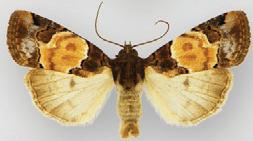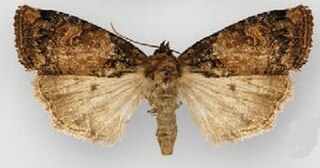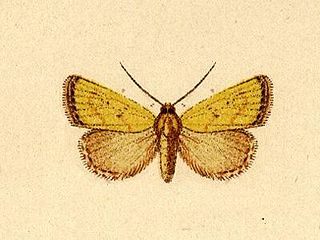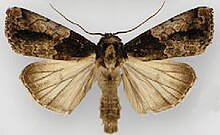
Bryolymnia is a genus of moths of the family Noctuidae erected by George Hampson in 1908.

Cryphia is a genus of moths of the family Noctuidae. The genus was erected by Jacob Hübner in 1818.

Bryolymnia viridata is a moth of the family Noctuidae first described by Leon F. Harvey in 1876. It is found in the US in western California from Sonoma County north of San Francisco southward to San Diego County.
Marimatha squala is a moth of the family Noctuidae first described by Clifford D. Ferris and J. Donald Lafontaine in 2010. It is found from Arizona, southward to Costa Rica.

Marimatha piscimala is a moth of the family Noctuidae first described by Clifford D. Ferris and J. Donald Lafontaine in 2010. It is found from south-eastern Texas to Arizona southward to Panama.
Marimatha tripuncta is a moth of the family Noctuidae first described by Heinrich Benno Möschler in 1890. It is found in the Caribbean and southern Florida.
Pseudomarimatha is a monotypic moth genus of the family Noctuidae. Its only species, Pseudomarimatha flava, is known from the western United States only in south-eastern Arizona and south-western New Mexico. Both the genus and species were first described by Clifford D. Ferris and J. Donald Lafontaine in 2010.

Bryolymnia viridimedia is a moth of the family Noctuidae first described by John Bernhardt Smith in 1905. It is found from south-eastern Arizona southward in the Sierra Madre Occidental to the Mexico City area.

Bryolymnia bicon is a moth of the family Noctuidae first described by Herbert Druce in 1889. It is found from Veracruz in central-eastern Mexico southward to Costa Rica.

Bryolymnia marti is a moth of the family Noctuidae first described by Richard Holland in 2010. It is found from central New Mexico and east-central Arizona southward to Durango in northern Mexico.

Bryolymnia mixta is a moth of the family Noctuidae first described by Donald Lafontaine and J. Walsh in 2010. It is known only from the Patagonia Mountains in south-eastern Arizona.

Bryolymnia biformata is a moth of the family Noctuidae first described by Donald Lafontaine and J. Walsh in 2010. It is known only from the Huachuca, Patagonia, and Santa Rita Mountains in south-eastern Arizona.

Bryolymnia poasia is a moth of the family Noctuidae first described by William Schaus in 1911. It is found in Costa Rica.

Bryolymnia semifascia, the half-banded bryolymnia, is a moth of the family Noctuidae. The species was first described by John Bernhardt Smith in 1900. It is found in the US from northern Colorado and southern Utah southward to south-eastern Arizona and south-central New Mexico.

Bryolymnia picturata is a moth of the family Noctuidae first described by William Schaus in 1894. It is found in south-eastern Mexico.

Bryolymnia ensina is a moth of the family Noctuidae first described by William Barnes in 1907. It occurs in coniferous forests from south-eastern Arizona and south-western New Mexico southward in the Sierra Madre Occidental to the state of Durango in Mexico.

Marimatha aurifera is a moth of the family Noctuidae first described by Francis Walker in 1858. It is found in Brazil, and other countries in South America. The species has been listed erroneously as occurring in the Caribbean and in North America.

Nudorthodes molino is a moth in the family Noctuidae first described by J. Donald Lafontaine, J. Bruce Walsh and Clifford D. Ferris in 2014. It is found in the western US in southeastern Arizona and southwestern New Mexico.
Homorthodes dubia is a species of cutworm or dart moth in the family Noctuidae. It was described by William Barnes and James Halliday McDunnough in 1912 and is found in North America.

Lacinipolia triplehorni is a species of cutworm in the family Noctuidae. It is found in North America.
This page is based on this
Wikipedia article Text is available under the
CC BY-SA 4.0 license; additional terms may apply.
Images, videos and audio are available under their respective licenses.









